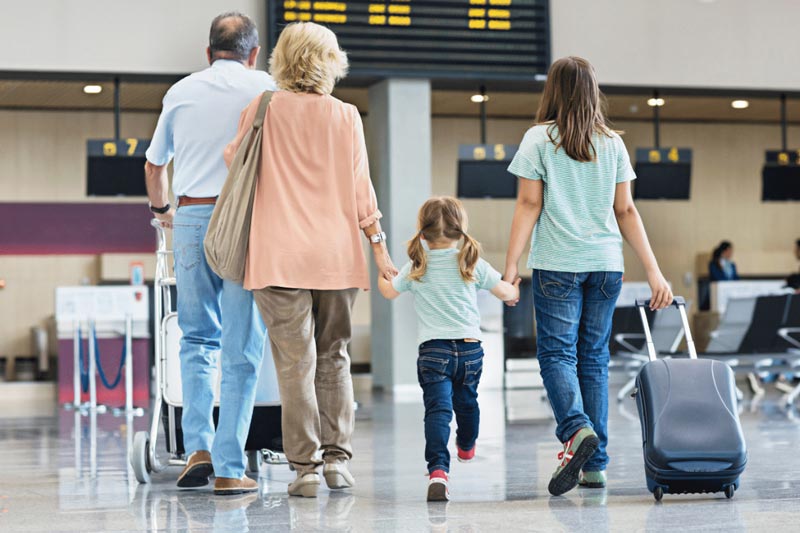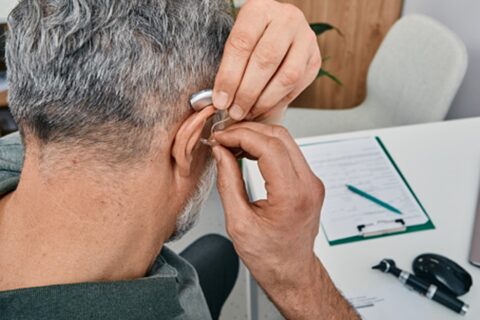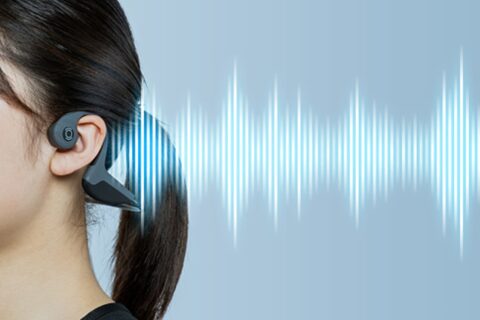Traveling with Hearing Aids

Hearing aids help you experience the sounds all around you, and some of the most wonderful sounds are heard while traveling. Whether it’s the exciting sound of an airplane taking off or the soothing sound of a campfire crackling, or the laughter of kids at Disney World or the howl of wild animals at a national park, your hearing aids will help you take it all in.
With a little bit of advanced planning, you can make sure your hearing aids are properly used and maintained while traveling.
Pack Everything You’ll Need
Remember to pack everything you need to operate, clean, and maintain your hearing aids, including:
- Hearing aid case and dryer or dehumidifier
- Extra batteries (for non-rechargeable hearing aids)
- Charger (for rechargeable hearing aids)
- An international adapter if going to another country
- Hearing aid cleaning kit
- Domes and wax guards
- Instruction manual(s)
- A spare set, if possible
Use Loop Technology
If your hearing aids are equipped with loop technology, this is a great time to use it. Loop technology uses telecoils, small copper wires coiled discreetly inside hearing aids, to receive electromagnetic signals and are generally activated easily with the touch of a button. When the technology is activated, any message being broadcast on the facility’s audio system — such as announcements made in an airport, subway or train station, event venue, and other public places — is sent directly to the telecoil in their hearing device.
Tips for Air Travel
Keep hearing aid supplies in your carry-on bag. Unfortunately, we’ve all heard stories of checked luggage getting lost or damaged. Keep your hearing aid supplies close to you in your carry-on bag where you can better ensure its safety and you can easily access it if needed.
Wear your hearing aids when you go through security, unless otherwise instructed by airport staff. You may want to tell the security agent that you are wearing hearing aids before you go through a detector or scan. If the hearing devices are detected during security, and you are asked to put them through the x-ray scanner, the x-rays won’t harm the hearing aid components.
Wear your hearing aids in on the plane so you’re always aware of your surroundings and you can hear the safety information and important notifications. When the flight staff asks everyone to turn off electronic devices, this mandate does not apply to hearing aids.
Tips for Road Travel
Wear your hearing aids in the car, whether you’re the driver or a passenger. You’ll need to be able to hear emergency sirens and other sounds that alert you to traffic situations. Try to keep loud music and other sounds to a minimum so you can focus on driving.
Tips for Public Transportation
If your device is equipped with loop technology, use it to hear announcements at subway, bus, or train stations.
Plan ahead: Check out the system online, map out your route, and buy tickets online to minimize having to do so in a noisy environment.
Request a Hearing-Accessible Hotel Room
Consider requesting a hearing-accessible room. Most hotels offer rooms equipped with a visual notification system for fire and emergency alarms, telephone amplifiers, and TDDs.
Contact Us for More Travel Preparations
Traveling with hearing aids doesn’t have to be difficult or overwhelming, and they’ll contribute to your enjoyment! If you have any questions, need accessories, or want to get your hearing aids checked before your trip, contact us and we’ll work with you to make sure you’re prepared for travel.
Enjoy your trip!


